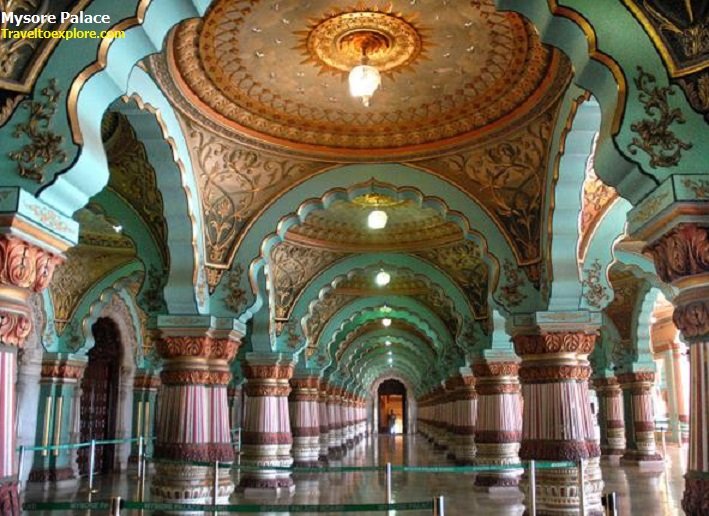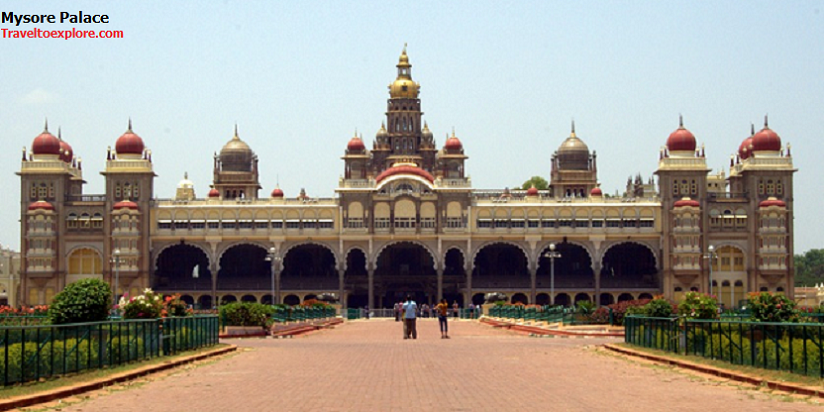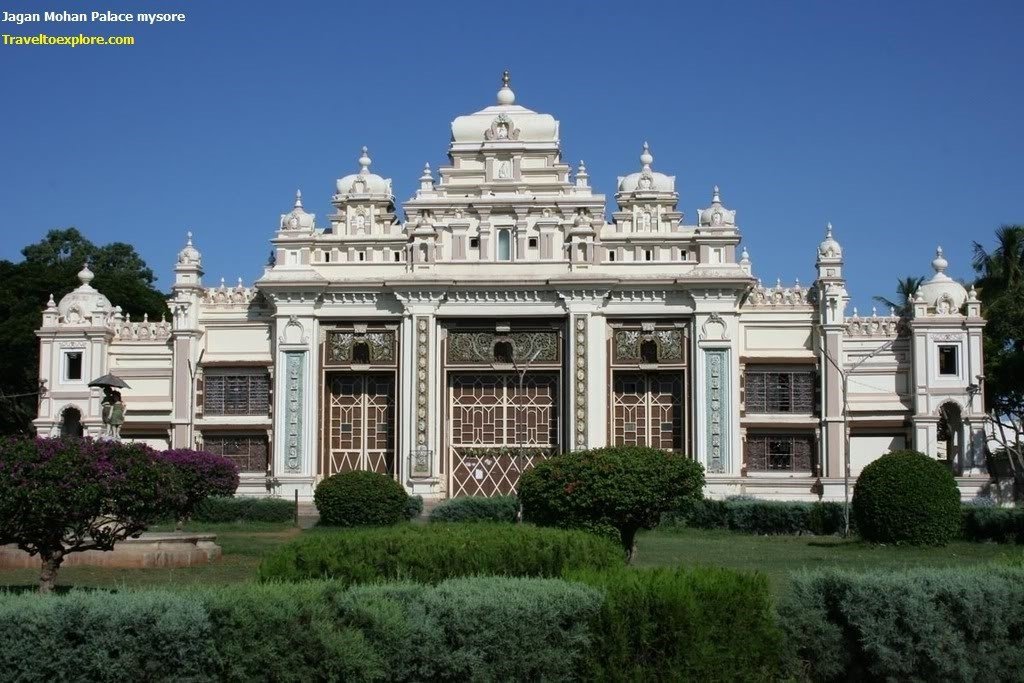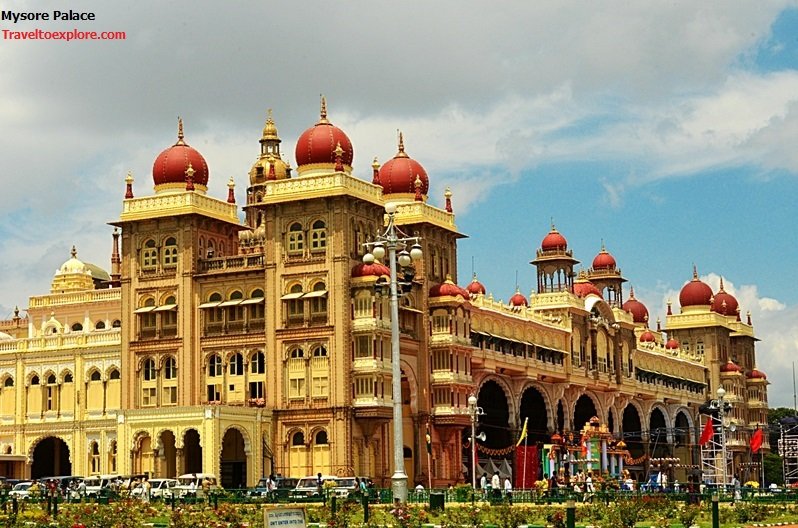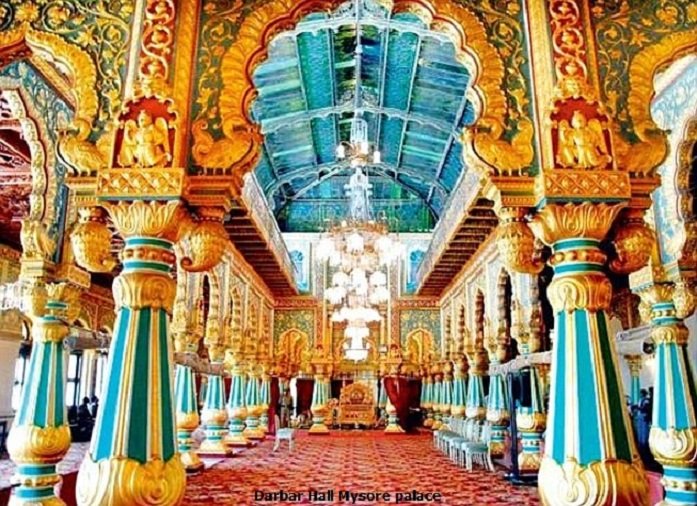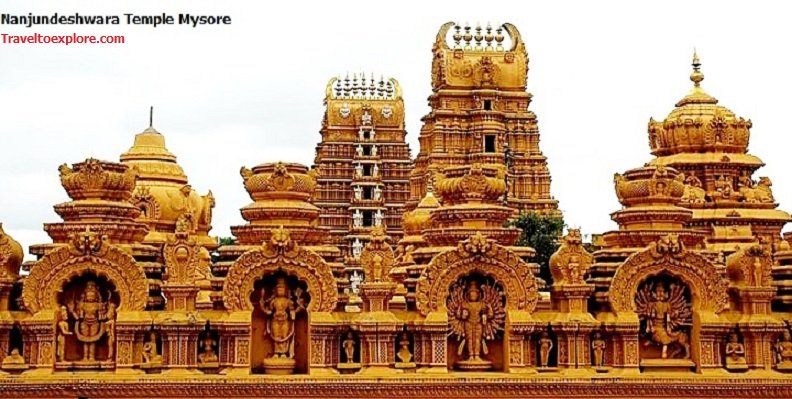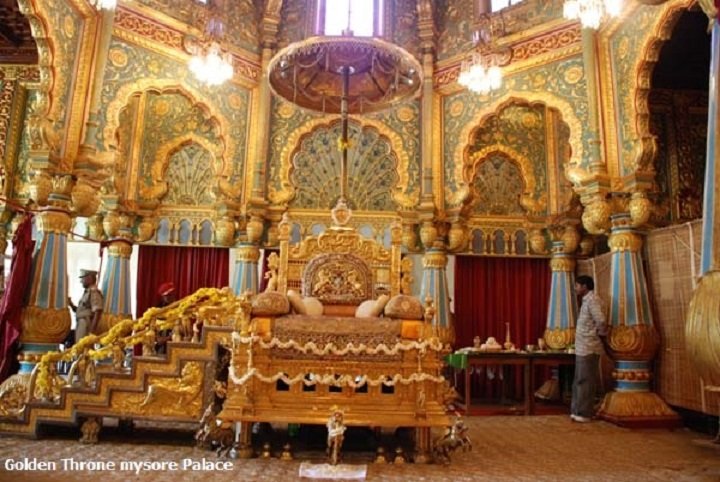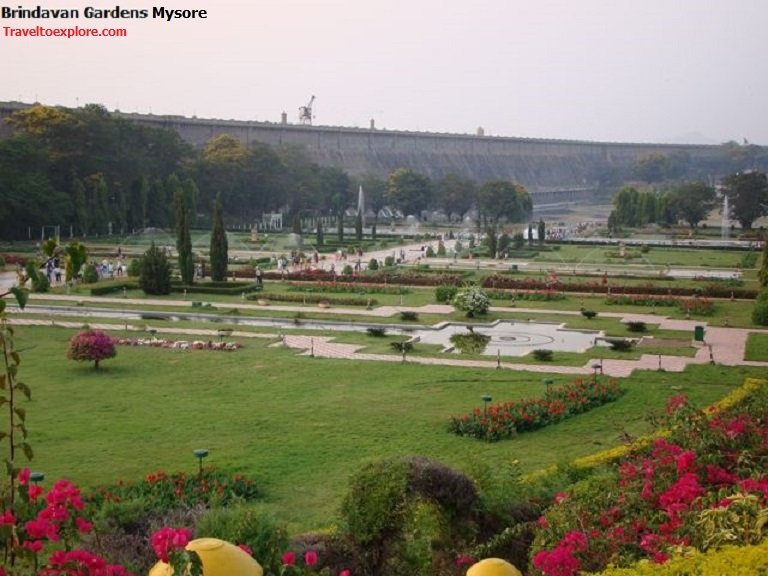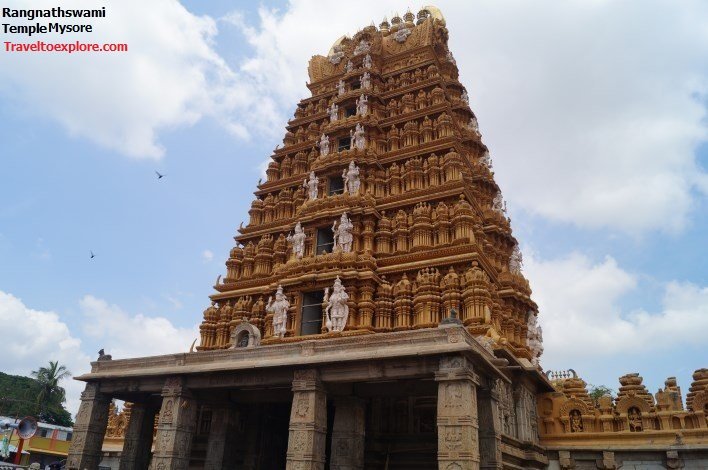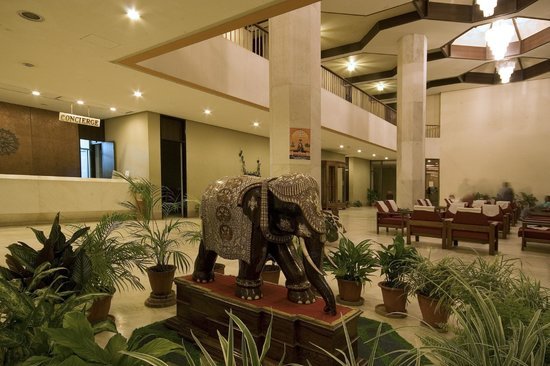Mysore
Highlights
Mysore, the city of palaces, is a popular travel destination in South India. Also called Mysooroo, the city was earlier the capital of the Wodeyar rulers. The Wodeyar rulers were great patrons of art and culture, which you can see in the rich heritage of the city. Besides its numerous palaces and royal buildings, Mysore city is also known for proximity to several other places of interest such as Srirangapatna, Krishna Raj Sagra dam and Sivasamudram falls.
In addition to its numerous attractions, the Mysore city is also known for sandalwood products and the Dasara festival (Navaratri) held every year. The Mysore Dasara is famous far and wide and attracts people from all parts. The name Mysore is said to have been derived from Mahishuru, which in turn has come from Mahisha. According to legends, the area around the Mysore city was once under the demon king Mahishasura, who was defeated and killed by goddess Chamundeshwari.
Located in the tropics, the Mysore has a moderate climate. If you are visiting Mysore during the summer months then you will see that the temperature varies from 20° Celsius to 35° Celsius while the winter temperature of Mysore remains in the range of 12° Celsius to 30° Celsius. Travel to Mysore and explore the different facets of the cultural capital of Karnataka state!
What To See
Brindavan Gardens Mysore
One of the most visited places in Mysore by locals and by tourists is the famous Brindavan Gardens. Located about 19kms from the heart of Mysore these beautiful gardens are laid out below the Krishnaraja Sagar dam built across the river Cauvery. These gardens are famous for the illuminated dancing fountains that come to life after sunset. The Krishnaraja Sagar Dam (KRS) (known as Kannambadi to the locals) itself is a superb example of excellent engineering and itself is a tourist attraction in Mysore. Sir M. Vishveswariah, one of India's finest engineers, built it in 1924.
The best time to visit the gardens is after sunset when all the bright colourful fountains come alive and seem to dance with joy to the accompanying music. This is a sight worth beholding as the entire garden is transformed into a fairyland. The Brindavan gardens remain illuminated from 7.00pm to 7.55pm from Monday to Wednesday and from 7.00pm to 8.55pm on Saturdays and Sundays.
Mysore Palace
Mysore Palace is located in the heart of the city. Mysore Palace is one of the most visited monuments in India. And its one of the largest palaces in the country, also known as Amba Vilas Palace, was the residence of the Wodeyar Maharaja's of the Mysore state.
The original palace built of wood, got burnt down in 1897, during the wedding of Jayalakshammanni, the eldest daughter of Chamaraja Wodeyar and was rebuilt in 1912 at the cost of Rs. 42 lakhs. The present Palace built in Indo-Saracenic style and blends together Hindu, Muslim, Rajput, and Gothic styles of architecture. It is a three-storied stone structure, with marble domes and a 145 ft five-storied tower. Above the central arch is an impressive sculpture of Gajalakshmi, the goddess of wealth, prosperity, good luck, and abundance with her elephants. The palace is surrounded by a large garden. Designed by the well-known British architect, Henry Irwin, the palace is a treasure house of exquisite carvings and works of art from all over the world.
Jaganmohan palace
The Jaganmohan Palace was built during rule of Krishnaraja Wodeyar III in 1861, as an alternate retreat for the royal family. The Mysore Palace, which was the original home of the royal family, was burnt down in a fire and the construction of a new palace in its place was started in the year 1897. The installation of Krishnaraja Wodeyar IV took place in a pavilion inside the Jaganmohan Palace in 1902. The early convocations of the Mysore University were also held in this palace. The first session of the Legislative Council of the Mysore state was held here in July 1907. The Legislative Council was then called as the Representative Council and was presided over by the Diwan. In 1915, the Jaganmohan palace was converted into an art gallery, which was later renamed in 1955 in the name of Jayachamarajendra Wodeyar, as the Sri Jayachamarajendra Art Gallery.
Jayalakshmi Vilas Mansion
It is constructed by Sri Chamaraja Wodeyar for the royal comforts of his eldest daughter Jayalakshammanni. It is situated in the lush green landscape of the University of Mysore premises. The Jayalakshmi Vilas Mansion was built in 1905, with total building cost of 7 lakh rupees. Jayalakshmi Vilas Palace reflects the rich architectural splendor of the ancient times and represents the zenith of artistic caliber of the local craftsman of bygone golden era.
The Jayalakshmi Vilas Mansion, was formerly known as the ‘First Rajkumari Mansion'. The palace includes a three-wing structure that features a sequence of Corinthian and ionic columns. The first floor of the building consists of regal pediments on the roof top. The interior of the Jayalakshmi Vilas Palace is extensively ornamented in Indian decor. The main feature of the Jayalakshmi Vilas Mansion is the dancing hall which is called the Kalyana Mantap, it consists of 12-pillar square and an eight-petal shaped dome. The 40 feet high roof of the Jayalakshmi Vilas Palace is adorned with painted glasses. The palace also consists of a gold -plated tower known as the "Kalasha". The mansion has 125 rooms, 300 windows, 287 exquisitely carved doors and it was spread across 6 acres.
Lalitha Mahal Palace
The Lalitha Mahal Palace is the second largest palace in Mysore. It is located near the Chamundi Hills. Lalitha Mahal Palace was built by the Maharaja Krishna Raja Wodeyar Bahaddur IV to host his most important guest, the Viceroy of India. Designed by E.W.Fritchley, a much patronised Mumbai-based architect of those days and constructed by B. Munivenkatappa, the building was built in 1931 at a cost of Rs.13.00 lakhs. Built on a raising ground, the palace was fashioned on the lines of the St. Paul’s Cathedral in London and is one of the imposing structures of the Mysore city. The palace is pure white in color and also has a sprawling terrace and landscaped gardens. The palace has exquisitely designed viceroy room, a banquet hall, a dancing floor and an Italian marble staircase (has an arresting curve) and also embellished with small ornamentation's, which are said to be replicas from various palaces in Britain.
Karanji Lake :
This lake is located at the bottom of the Chamundi hills and is close to the center of the city. This lake is spread over 90 acres and is home to more than 90 species of resident and migratory birds. The lake also has India's largest walkthrough aviary. The lake has boating facilities that are available on all days except Tuesday. On the banks of the Karanji lake is the Regional Museum of Natural History. With the Chamundi hills as a backdrop makes the lake look picture perfect. The lake and its surroundings allow you to appreciate nature and the Regional Museum that is adjacent to the lake, will help you increase you knowledge about the natural environment in South India and will help you understand the importance of conservation of nature. The lake has a bund on which you can take refreshing walk.
Kukkaranahalli Lake
This lake is in the middle of Manasagangothri, the Mysore University campus. This beautiful and placid lake is visited by a variety of migratory birds during winter. During the winters this lake attracts a lot of bird watchers, who come observe and enjoy the birds. The lake provides boating facilities at nominal rates.
Lingabudi Lake
This lake is in Sriramapura and is about 8km from the center of the city. This picturesque lake also attracts numerous types of migratory birds. The lake has a beautiful lush green park beside it and the entire sight that is presented is one that sooths the mind and soul. There are a number of buses to this lake from the city bus stand. This place is a favourite haunt of nature lovers of the city.
Mysore Zoo
Another major tourist attraction in Mysore city is the Mysore Zoo. The Mysore zoo is over a century old and has an interesting history of its own. The zoological gardens in Mysore were set up by Maharaja Chamaraja Wodeyar who is acclaimed as one of the architects of modern Mysore. The Maharaja was a nature buff and set up a number of gardens and parks in Mysore. The Bandipur Wildlife Sanctuary was established during the reign of the Maharaja to entertain important visitors to Mysore and give them the opportunity to observe the animals in their natural habitat.
The zoo not only had an excellent collection of animals, it has a beautiful bandstand and had a picturesque setting with the Chamundi hills as its backdrop and an artificial lake on its premises. After expansion the zoo in 1909 it was renamed Sri Chamarajendra Zoological Gardens after its founder. When the Maharaja traveled abroad he selected rare animals from these countries and brought them back to add to the zoo's collection. Sometime animals available in Mysore forest were exchanged for animals acquired from other countries. Mr. Herman Ruhe a German who owned a number of zoos in Germany was closely associated with the Mysore Zoo for about eight decades. The Maharaja also made the Mysore zoo an "orphanage" for raising abandoned animals.
Chamundi Hills
The Chamundi Hills on the outskirts of Mysore city is another famous landmark of the city. A visitor can see these hills from a distance of about 8 to 10kms while driving to this city of Palaces from any direction. The Chamundi Hills is about 3km from the city. It is at a height of 1065 meters above sea leave and about 800 feet above Mysore city. On the top of the hill is the Chamundeshwari temple that dates back to the 11th century. Goddess Chamundeshwari is an incarnation of Goddess Parvathi who took this form to destroy the demon king Mahishasura.
The statue is 4.8 meters high. There is a temple tank called the Devikola that is used during festivals. It has a good motorable road and KSRTC (State transport) have buses that regularly ply from Mysore to the top of the hill. Taxies are available as well. Auspicious days to visit the temple are Tuesdays, Fridays and the 10 days of Dussehra. Temples is open from 7.30am to 2pm and from 3.30pm to 6pm. The tower of the temple is illuminated on festivals and on public holidays.
Balmuri and Edmuri Waterfalls
When you travel from Mysore to the KRS dam, 3kms off the main road are the two small beautiful waterfalls. They are Balmuri and Edmuri waterfalls. The place where the waterfalls are located is surrounded by lush greenery and is a hot spot among the locals as well. A visit to this place is calming and relaxing. There is an ancient Ganesh temple close by that you can visit. You will have to hire a taxi or an auto to get to these waterfalls.
St. Philomena's Church
The St. Philomena's Church in Mysore is one of the oldest churches in India. It is over 200 years old. Initially over 250 years ago there was a small church in its place. When the capital of Mysore state was move from Srirangapatnam to Mysore city in 1799, many British officers and soldiers came and settled down in Mysore. The Maharaja Krishnaraja Wodeyar III realized the need for a Christian church for these people. So the Maharaja gave them a small plot of land on the Mysore-Bangalore Road and a little church came up there. As the city expanded and the Christian population of the city increased there was a need for a larger church. The entire church is built in the Gothic style is one of the largest Cathedrals in South Asia. The Church has the relic of the 3rd century St. Philomena that is in a beautiful catacomb that is below the main altar. The construction of the church was completed under Bishop Rene Fuga's supervision. At that time Thamboo Chetty, was the Huzur Secretary to the Maharaja of Mysore, heard about the greatness of St. Philomena and obtained a relic of the saint from Peter Pisani, Apostolic Delegate of the East Indies in 1926. After obtaining the relic it was handed over to Fr. Cochet. The next year a new state of St. Philomena was brought from France.
How To Reach
By Road
Mysore is 139kms to the south west of Bangalore. The state highway that connects these two cities is very well maintained. Travelling from Bangalore to Mysore by road is a pleasant experience and will take about 3hrs. The Karnataka Road Transport Corporation has excellent bus service to Mysore. There are ordinary buses, semi-luxury buses and luxury buses operated by the Government of Karnataka. Every half an hour there is a non-stop bus to Mysore from Bangalore Bus Station. Corporations of other states and private tour operators have buses plying to Mysore as well. All these facilities have made Mysore extremely accessible by road.
By Train
Mysore is connected with a number of trains to Bangalore. The super fast luxury train the Shatabdi Express connects Mysore to Madras. The quickest and most comfortable way to reach Mysore is via Bangalore.
By Air
The nearest airport to Mysore is Bangalore (139 km). All the domestic airlines in the country operate their flights to Bangalore from all the major cities in the country. Some international airlines too have flights to Bangalore. Bangalore is to have an international airport shortly.
Gallery
Related Package
Related Hotel
Reviews
Excellent
4.6 / 5.0
90% recommend this package
Score Breakdown
- (58)
- (132)
- (89)
- (58)
- (9)
Average Rating For
- Cleanliness 4.5
- Service 4.5
- Comfort 4.2
- Condition 3.8
- Neighbourhood 4.4

